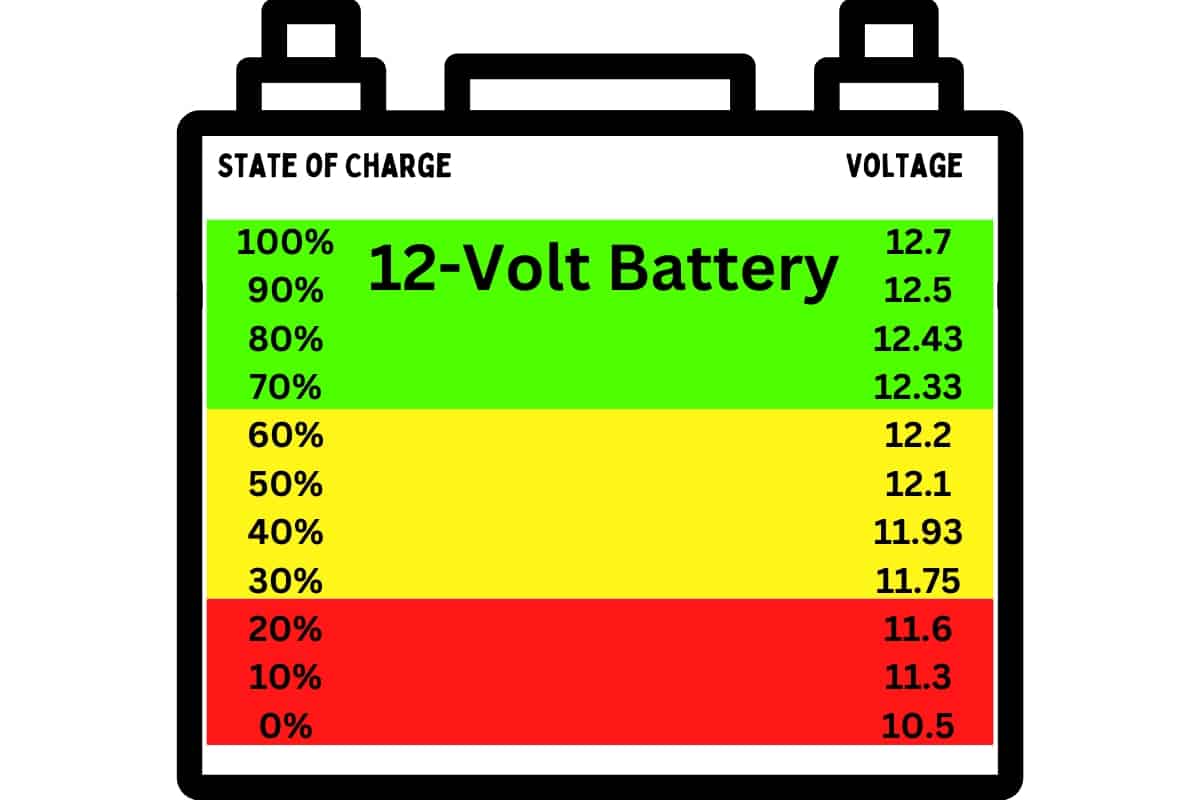Listen to the article below by hitting the play button below and feel free to scroll the page for any helpful visuals. All of the articles on this website will have this audio feature for your convenience.
Starter batteries inside gas-powered vehicles are essential for turning over your engine and powering the electronics onboard. Sometimes we leave an interior light on, or the headlights when we park our car for the night. The result will be a dead battery in the morning.
Knowing how long it takes to charge these batteries is important for structuring your daily plans around the charging process.
This article will give you a basic understanding of the charging principles and expected charging times for the different sizes of car batteries.
How Long Does it Take to Charge a Gas-Powered Car Battery
Using an appropriately sized wall charger, a gas-powered car’s 12-volt battery can typically be brought up to a full charge from empty in about 10-12 hours.
Most of the gas-powered vehicles that you’ll come across on the roads will be outfitted with a 12-volt battery. The voltage is the pressure behind the electrons.
You will need a 12-volt charger to bring this type of battery back to life.
12-volt chargers come in all sizes with regards to output in amps.
Pro Tip: For charging lead acid batteries (flooded or sealed) in a gas-powered vehicle, it is best to use a charger with amps that are 10% or less of the total ampere-hour (Ah) rating of the battery.
Most car batteries will not be rated in amp-hours and instead will have a reserve capacity (RC) or a cold cranking amps (CCA) rating on the sticker. There are some ways to ballpark estimate what your battery is, but the long and short of it is that your car’s battery will likely fall between 50Ah and 100Ah.
Lead acid batteries can only accept so much of a charge without overcharging. Charging a battery is essentially converting electricity from your house into stored chemical energy in the battery. It can only happen so fast and so efficiently.
If you use a charger that has too many amps, the battery will bubble, gurgle, hiss, steam, whistle, etc. These are all indicators of overcharging and this is boiling away your electrolyte inside the battery and reducing its lifespan.
In a flooded battery (one where you pop the caps off the top) you can use distilled water to replace water that has evaporated. In a sealed battery you’re out of luck and your battery will reduce its lifespan and charging abilities every moment you overcharge it.
Generally speaking, if you use a charger between 4 and 10 amps you’ll be just fine. I personally use 4 to 7.5-amps and have done so for decades. It’s a safe output for your battery to absorb gently enough, but it’s also fast enough to be completed with a full charge overnight in most cases.
Here’s a few tables with ideal chargers and their times depending on whether the battery is at a 50% starting charge or 0%. Take note of the size of your battery by looking at the sticker on top. Find which table matches best with your battery to get a ballpark estimate of charging times.
Batteries with Ah: 36-46.2, CCA: 200-315, or RC: 40-60
| Charging Amps | 50% Starting Charge (12.1v) | 0% Starting Charge (10.5v) |
|---|---|---|
| 5 | 5.25 Hours | 10.5 Hours |
| 8 | 4.25 Hours | 8.5 Hours |
| 10 | 3.25 Hours | 6.5 Hours |
Batteries with Ah: 46.2-58.8, CCA: 315-550, or RC: 60-85
| Charging Amps | 50% Starting Charge (12.1v) | 0% Starting Charge (10.5v) |
|---|---|---|
| 5 | 6.5 Hours | 13 Hours |
| 8 | 4.25 Hours | 8.5 Hours |
| 10 | 3.25 Hours | 6.5 Hours |
Batteries with Ah: 58.8-111, CCA: 550-1,000, or RC: 85-190
| Charging Amps | 50% Starting Charge (12.1v) | 0% Starting Charge (10.5v) |
|---|---|---|
| 5 | 11 Hours | 22 Hours |
| 8 | 6.5 Hours | 13 Hours |
| 10 | 5.25 Hours | 10.5 Hours |
What Charger Should Be Used to Charge a Car’s 12-volt Battery?
Generally, it is safest and best to charge your car’s 12-volt battery with a smart charger that has a microprocessor and diagnostic tools that will work really well at not overcharging the battery after it has reached a full charge. The charger should advertise that it has a “float” or “maintenance” mode. Nearly every charger made today is the aforementioned type.
If the charger you’re looking at says that it is not safe to leave the battery hooked up to the charger after the battery has reached 100%, then I would steer clear of that charger. If you forget to remove it from the charger, the charger will boil off your electrolyte and could very well permanently kill the battery by the time you return.

Again, look for a charger in the 5-amp to 10-amp range. I personally feel that 5-8 amps is the sweet spot unless you have a very high capacity battery (100+ Ah).
My personal favorite is a brand called “Deltran” and they make the Battery Tender line of batteries. If you’re going to be using this charger for lawn mower batteries as well, I’d go with the 4-amp model. If you’re just going to be using it for car and marine batteries, then you can’t go wrong with the 5-amp model. You can check out the prices from the links above on Amazon. Unfortunately, the prices have jumped up about 50% across the board on most battery chargers since 2020.
How Do I know What My Battery’s State of Charge Is?
To estimate your battery’s state of charge, you’ll need to use a multimeter to check the voltage between the two terminals. Of course, this method assumes that all of your battery’s cells are in optimal condition.
Technically, you’d need to also measure the specific gravity of each of the cells with a hydrometer to get a better idea, but we’re going to keep things easy and for ballpark estimates.
On your multimeter, set the dial to the DC (direct current) voltage setting which will be a “V” with dashes above it. Touch the meter’s leads to the battery’s terminals. If you get them reversed, it’s no big deal. The number will still be the same but it will show a negative sign instead of a positive one.
Use the following table to get an estimate based on the DC voltage that you get:

